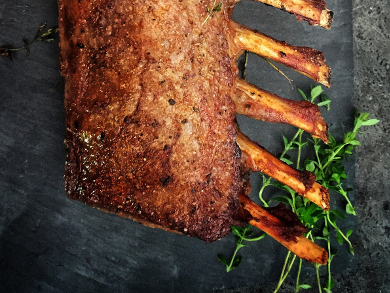Heating food causes a number of chemical reactions to happen, such as Maillard reactions and pyrolysis. At high temperatures, such as in baking or barbecues, carbonization can occur and carbon nanostructures can be formed. Fluorescent carbon nanodots (CDs) are one example for such structures.
Mingqian Tan, Dalian Polytechnic University, China, and colleagues have found fluorescent carbon nanoparticles in baked lamb. The team baked the meat at 250 °C for 30 minutes and extracted the carbon nanoparticles using ethanol. The nanoparticles exhibited strong fluorescence under excitation at 365 nm. The researchers characterized the material using transmission electron microscope (TEM) and found that the particles are nearly spherical with an average size of 2.0 nm.
The researchers used the extracted nanoparticles to detect glucose, using the enzyme glucose oxidase to convert the glucose to H2O2. The peroxide then forms hydroxyl radicals in the presence of Fe2+, which quenches the nanoparticles’ fluorescence. The particles are relatively stable and, according to the team, could be used in sensor applications.
- Presence of Fluorescent Carbon Nanoparticles in Baked Lamb: Their Properties and Potential Application for Sensors,
Haitao Wang, Yisha Xie, Shan Liu, Shuang Cong, Yukun Song, Xianbing Xu, Mingqian Tan,
J. Agric. Food Chem. 2017.
DOI: 10.1021/acs.jafc.7b02913




